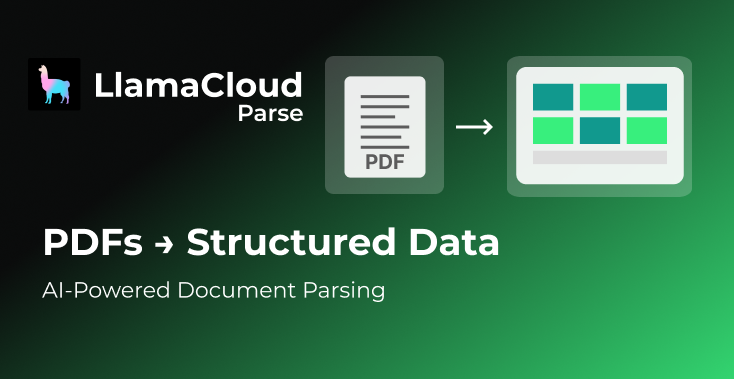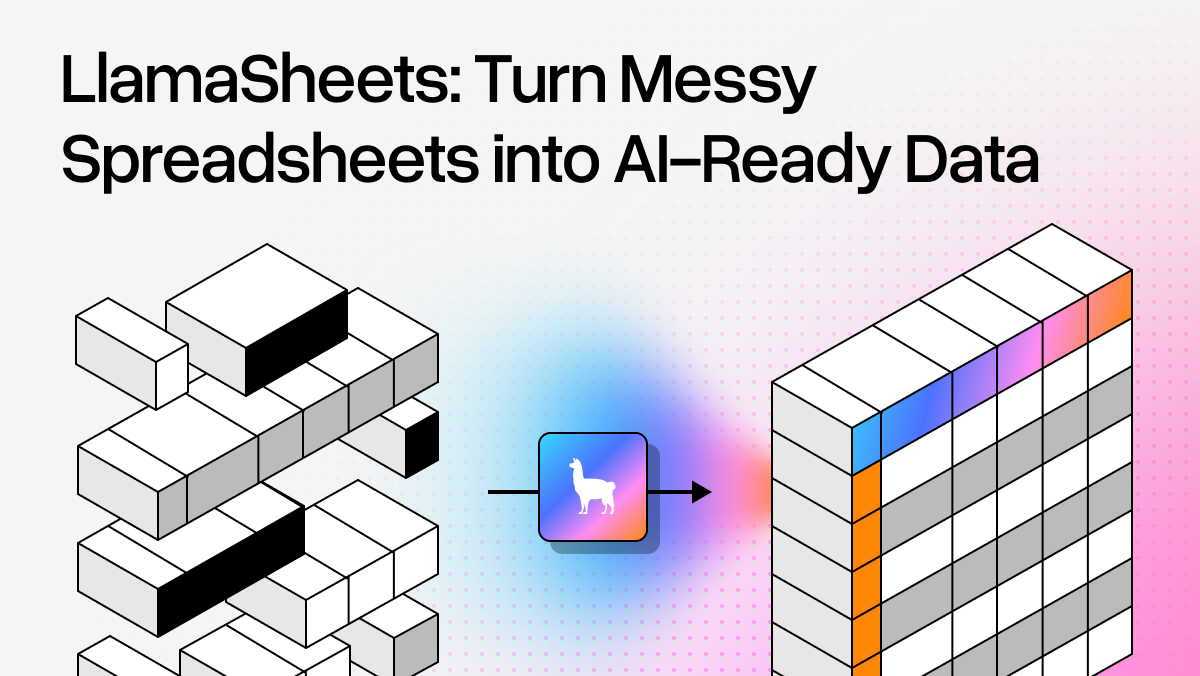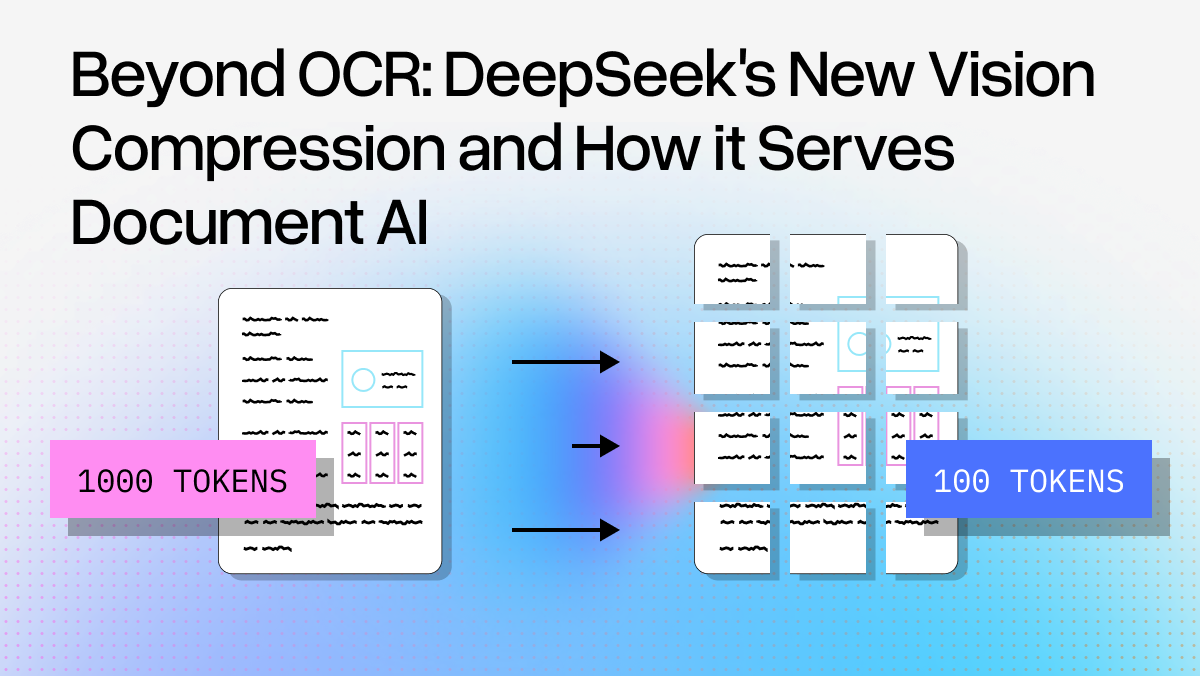The PDF Challenge
Every enterprise deals with thousands of PDFs daily—invoices, contracts, reports, forms, and technical documentation. Traditional approaches like OCR and rule-based parsing and extraction struggle with complex layouts, inconsistent formatting, and multi-column documents. Enter Large Language Models (LLMs): a game-changing approach that doesn't just read PDFs, but truly understands their layout and content.
The LlamaCloud Solution
Through LlamaParse—our state-of-the-art document parsing service—and LlamaCloud's enterprise-grade infrastructure, organizations can transform any PDF into structured, searchable data. In this comprehensive guide, we'll explore how to implement AI-powered PDF parsing using LlamaParse along with other LlamaCloud features like LlamaExtract, examine real-world use cases across industries, and provide a step-by-step roadmap for replacing legacy OCR systems with intelligent document processing that scales with your business needs.
Why Traditional PDF Parsing & Extraction Falls Short
The Limitations of Legacy OCR
- Layout Blindness: OCR treats documents as flat text, losing crucial structural information
- Format Fragility: Breaks when encountering tables, charts, or non-standard layouts
- Context Ignorance: Can't understand relationships between different document sections
- Manual Rule Creation: Requires extensive configuration for each document type
AI for PDF Understanding
New AI methods revolutionize PDF parsing by combining:
- Visual Understanding: Recognizing document structure and layout
- Contextual Reasoning: Understanding relationships between data points
- Adaptive Processing: Handling diverse document formats without custom rules
- Semantic Extraction: Pulling meaningful insights, not just raw text
LlamaParse: The AI-Powered PDF Parsing Platform
What Makes LlamaParse Different
Advanced Multimodal Processing LlamaParse leverages state-of-the-art vision-language models to understand both text and visual elements in PDFs. Unlike traditional parsers that struggle with complex layouts, LlamaParse maintains document structure while extracting meaningful content.
Context-Aware Parsing The platform doesn't just parse text—it understands document hierarchy, relationships between sections, and semantic meaning. This enables extraction of structured data from unstructured documents.
Key Features That Drive Results
Intelligent Table Processing
- Preserves table structure and relationships
- Handles merged cells and complex formatting
- Maintains data integrity across columns and rows
Multi-Format Support
- Native PDF processing (including scanned documents)
- Image-based document handling
- Complex form recognition
- Technical drawing interpretation
Structured Output Generation with LlamaExtract
- Markdown, JSON, XML, or custom format output
- Configurable extraction schemas using LlamaExtract
- Metadata preservation
- Confidence scoring for extracted data
Step-by-Step Guide to AI Document Automation Implementation
Phase 1: Document Audit and Use Case Identification
Conduct a Document Processing Assessment Start by mapping your current document workflows to identify automation opportunities. Most organizations find the highest ROI in these areas:
- Invoice processing automation: Monthly vendor invoices, expense reports, and purchase orders
- Claims processing AI: Insurance claims, warranty requests, and damage assessments
- Contract automation AI: Service agreements, NDAs, and vendor contracts
- Form processing with AI: Applications, surveys, and regulatory filings
Calculate Your Automation ROI Baseline Document your current state to measure improvement:
- Average time spent per document type
- Error rates in manual data entry
- Processing backlogs and delays
- Staff hours dedicated to document tasks
- Compliance risks from manual processing
Phase 2: LlamaParse Pilot Implementation
Set Up Your Document Data Parsing Pilot Begin with LlamaParse's straightforward setup process:
- Create your LlamaParse account and obtain API credentials
- Upload 10-20 sample documents from your pilot use case
- Configure basic parsing parameters for your document type
- Test initial results and refine requirements
Integrate with Existing Systems Connect LlamaParse to your current workflow:
- Map extracted data fields to your database or CRM
- Set up automated file monitoring for new document arrivals
- Configure output formats (JSON, CSV, Markdown, or even direct index insertion with LlamaCloud)
- Establish human review strategies for documents that need it
Phase 3: Scale and Optimize
Expand to Additional Document Types Based on pilot success, gradually add:
- Unstructured data processing: Emails, letters, and free-form documents
- Multi-format document processing: Scanned PDFs, images, and mixed media files
- Document classification and extraction: Automatic sorting and routing
- AI compliance workflows: Regulatory document validation
Implement Quality Controls Establish validation processes:
- Confidence thresholds for automatic processing
- Human review queues for low-confidence parsing and extractions
- Feedback loops to improve accuracy over time
- Regular accuracy audits and reporting
Optimize for Volume Prepare for full-scale deployment:
- Batch processing for high-volume scenarios
- Parallel processing for faster throughput
- Automated monitoring and alerting
- Performance tuning based on usage patterns
Phase 4: Full Production and Advanced Features
Deploy Enterprise-Wide Document Automation Roll out automated document processing across departments:
- Finance: Invoice processing automation and expense management
- Legal: Contract automation AI and compliance documentation
- HR: Resume processing and employee document management
- Operations: Technical document search AI and procedure automation
Implement Advanced AI Features Leverage sophisticated document understanding AI capabilities:
- Document RAG: Build searchable knowledge bases from processed documents
- Agentic workflows for documents: Create intelligent routing and approval processes
- GenAI document agents: Implement AI assistants for document-related queries
- Parsing and reasoning agents: Enable complex document analysis and insights
Phase 5: Continuous Improvement and Innovation
Monitor and Optimize Performance Regularly assess your document workflow automation:
- Monthly accuracy and efficiency reports
- User satisfaction surveys and feedback
- Cost per document analysis
- ROI measurement and reporting
Stay Current with AI Advancements Keep your intelligent document processing system cutting-edge:
- Regular platform updates and new feature adoption
- Integration with emerging AI technologies
- Expansion to new document types and use cases
- Exploration of advanced automation opportunities
Conclusion: Transform Your Document Processing Today
LLM-powered PDF parsing and extraction represents a fundamental shift from rule-based processing to intelligent document understanding. With LlamaParse and LlamaCloud, organizations can achieve unprecedented accuracy and efficiency in document processing while reducing operational costs and improving compliance.
The key to success lies in starting with a clear use case, implementing incrementally, and measuring results continuously. As the technology continues to evolve, early adopters will gain significant competitive advantages through improved operational efficiency and enhanced decision-making capabilities.
Ready to get started? Begin with a pilot project focusing on your highest-volume, most error-prone document type. The results will speak for themselves.
Want to see LlamaParse in action? Schedule a demo to explore how AI-powered PDF parsing can transform your document workflows.





